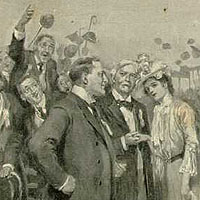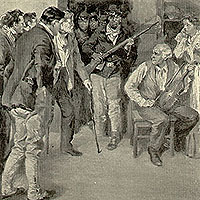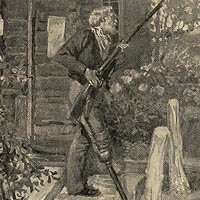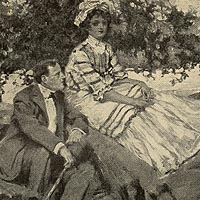Thomas Dixon, Jr., was a nationally-known Baptist preacher when he decided in 1901 to become a novelist. According to his unpublished autobiography, he determined to write The Leopard's Spots while attending one of the touring "Tom shows." Dixon's biographer, Raymond Allen Cook, sums it up this way:
Angered by what seemed to be a great injustice in the play's attitude toward the South, he could hardly keep from jumping to his feet and denouncing the drama as false. Finally, when the performance was over, he arose, vowing that he would tell the "true story" of the South if it was the last act of his life.
In an interview in 1903, Dixon himself said:
I claim the book is an authentic human document and I know it is the most important moral deed of my life. It may shock the prejudice of those who have idealized or worshipped the negro as canonized in "Uncle Tom." Is it not time they heard the whole truth? They have heard only one side for forty years.
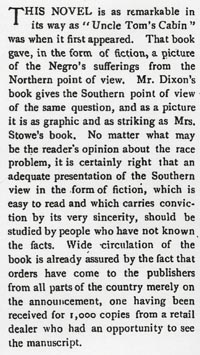
DETAIL: DOUBLEDAY & CO. AD
CLICK HERE FOR ANOTHER AD
In the novel Dixon offers a very unreconstructed account of Reconstruction, in which the villains are Simon Legree, Northern liberals and emancipated slaves, and the "hero" is the Ku Klux Klan. As you can quickly see from the list of characters that Dixon supplied his readers, his novel includes versions of Stowe's own characters, but if her project (as she put it in her Preface) was to "awaken sympathy" for blacks, his is to depict the black as a savage beast, a threat to white women and American civilization. His "Tom" is a "poor white" Christian whose daughters both die because of blacks.
His novel is hateful, but it was very popular with American readers, north and south. It sold about 200,000 copies in 1902, and led ultimately to two other novels, Dixon's "Klan trilogy," which became the source for D. W. Griffith's highly-regarded and popular film Birth of a Nation (1915). Griffith's movie provoked a lot of criticism, but only a few voices were raised to protest the racial politics of The Leopard's Spots. The evidence suggests many of the same Americans who enjoyed Uncle Tom's Cabin enjoyed Dixon's reactionary "sequel" to its story. The Atlanta Journal, for example, called it "a worthy successor to 'Uncle Tom's Cabin.'"
For more on "Uncle Tom's cabin" in Griffith's movie, CLICK HERE.]
